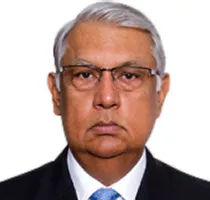-
CENTRES
Progammes & Centres
Location
President Donald Trump is not having a smooth ride.

President Donald Trump is not having a smooth ride. The road is getting rougher for the US President in an election year. American voters will be casting their ballots in November. Most American Presidents have been able to get re-elected for a second four-year term without much exertion. Riding a wave of popularity that began during the election campaign, with his “America First” and “Make America Great Again” slogans and an economy bouncing back in the pre-COVID era, Trump is now trailing his Democratic presidential rival Joe Biden by several percentage points. Biden’s lead is growing and President Trump’s reactions are becoming more intemperate, displaying some signs of nervousness. Twitter has had to flag his tweets as objectionable. The ban on H1B visa, new Green Cards and some other visa categories — promulgated by a presidential executive order on June 2 — has to be viewed in this context.
The raging China-origin COVID pandemic in the US has skyrocketed, making it top of the global list for infections and deaths. The Trump administration’s response to the pandemic has been patchy and incoherent, caught between the opposing pressure of whether to put healthcare first and saving lives or to protect the economy.
Most countries are on the horns of a similar dilemma. The Black Lives Matter (BLM) movement has been triggered off by a police force, widely regarded as racist, in its violent response to African-Americans. Random killings and maiming of African-American suspects by American police has set off a wildfire of protests across the country. Riots and looting have broken out in many cities. The BLM movement is taking its own toll on society and political discourse.
Trump’s reaction has been far from sympathetic. Instead, he has warned protesters that he will deploy the armed forces to quell the protests. The American military leadership is increasingly uneasy with such announcements by the President. The US Congress has geared up to pass a new legislation on police reforms which is expected to cause another round of partisan debate between Democrats and Republicans in the US Senate.
Though immigration has been a subject of divisive debate in American politics, Trump’s hard-line views on immigration has resonated with his vote bank. His move to temporarily ban issue of H1B and related work visa for foreign workers, is motivated by his desire to reclaim some of his dwindling popularity in the presidential race. The ban on H1B visa, till after the November election, is expected to contribute around 5.25 lakh jobs, at a time when the COVID pandemic has caused millions of job losses.
At last count, job losses were hovering around 40 million. Millions of Americans and legal residents have signed up for government welfare, and Goldman Sachs has estimated that 25 per cent of the workforce may be without a job in the near future. President Trump has claimed that “between February and April of 2020, more than 17 million United States jobs were lost in industries in which employers are seeking to fill worker positions tied to H-2B non-immigrant visas.” The justification for the ban is to keep at bay the threat to employment opportunities for Americans caused by the COVID pandemic.
Both the Indian and American IT industry have protested the ban. Technology giants like Google, Facebook, Amazon and Tesla have been vocal in their criticism. The Indian IT industry has also reacted adversely, and NASSCOM has urged the Trump Administration to limit the ban to 90 days. There are about 4 lakh Indians holding H1B visa and around 1 lakh holding L-1 visa in the US, working in the American IT sector. The immediate impact will be on costs that Indian IT companies operating in the US, since they will have to hire local Americans at higher wages or move work to the back-end in India.
Any prolonged ban will cause human resource disruption in the IT industry which has become the backbone of India-US bilateral bonds. Canada will be a likely collateral beneficiary of this, as skilled professionals will prefer a welcoming Canada, rather than an unwelcoming US.President Trump’s obsessive focus on trade deficit has led to a trade war with China that has not been resolved, despite several rounds of negotiations. Though the US’s trade imbalance with India is around $24 billion, certainly not a large figure, it has become enmeshed in the debate on trade deficit. India-US trade is now one of the pillars of bilateral ties. Bilateral trade in goods and services have grown to around $142 billion in 2018, rising from a mere $16 billion in 1999, making India the eight largest trading partner of the US.
India’s official reaction has been low key. Apart from acknowledging that it will impact adversely on the IT sector which is an important pillar of bilateral trade, the MEA has announced consultations with stake holders on this issue. The ban is unlikely to cause a huge upheaval in technology trade and may be a blip on the screen for overall ties.
With the bloody clashes in Ladakh and China making aggressive moves along the LAC, threatening Taiwan, Hong Kong and all countries in the South China Sea littoral, Asia’s future is being jeopardised by Beijing’s overweening ambition and increasing rogue behaviour. The world is grappling with the China-origin COVID virus and stabilising ties among the major powers is the need of the hour. China’s aggressive actions have cast a shadow and will have negative impact globally. India-US ties are strong enough to ride over the temporary H1B visa ban, at a time when China is becoming the migraine of the world.
(Democratic presidential rival Joe) Biden’s lead is growing and President Trump’s reactions are becoming more intemperate, displaying some signs of nervousness. Twitter has had to flag his tweets as objectionable. The ban on H1B visa, new Green Cards and some other visa categories — promulgated by a presidential executive order on June 2 — has to be viewed in this context
This commentary originally appeared in New Indian Express.
The views expressed above belong to the author(s). ORF research and analyses now available on Telegram! Click here to access our curated content — blogs, longforms and interviews.

Pinak Chakravarty was a Visiting Fellow with ORF's Regional Studies Initiative where he oversees the West Asia Initiative Bangladesh and selected ASEAN-related issues. He joined ...
Read More +